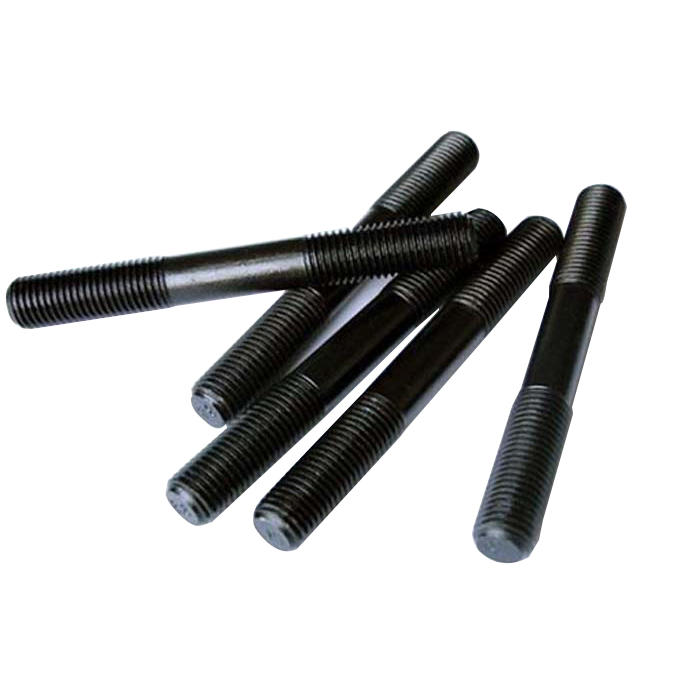Understanding Partially Threaded Studs: A Key Component for Robust Engineering
2024-08-10
When it comes to engineering and construction, the choice of fasteners can significantly impact the performance and durability of a structure or machine. Among the various types of fasteners, partially threaded studs play a crucial role. These versatile components offer a unique combination of threaded and unthreaded sections, making them ideal for a range of applications. In this blog, we will explore what partially threaded studs are, their benefits, and their various uses in different industries.
What Are Partially Threaded Studs?
Partially threaded studs are cylindrical fasteners that feature both threaded and unthreaded sections along their length. Unlike fully threaded studs, which have threads running the entire length, partially threaded studs have a portion of their body that remains smooth and unthreaded. This design provides distinct advantages depending on the specific requirements of a project.
Key Features of Partially Threaded Studs
1. Combination of Threaded and Unthreaded Sections
- Threaded Portion: The threaded section allows for secure fastening into nuts or tapped holes, providing a strong and reliable connection.
- Unthreaded Portion: The unthreaded section provides a smooth surface that can bear load and provide alignment, or it may serve as a guide or spacer in certain applications.
2. Versatile Design
- Customizable Lengths and Threads: Partially threaded studs can be manufactured with varying lengths and thread configurations, making them adaptable to a wide range of applications.
- Material Options: They are available in various materials, including steel, stainless steel, and alloy metals, to suit different environments and requirements.
Benefits of Using Partially Threaded Studs
1. Enhanced Load Distribution
- Load-Bearing Capacity: The unthreaded portion of a partially threaded stud provides a smooth surface that can distribute loads more evenly, reducing stress concentrations and enhancing the component’s load-bearing capacity.
- Reduced Risk of Thread Damage: By limiting the threaded area, partially threaded studs minimize the risk of thread damage, especially in high-torque applications.
2. Improved Alignment and Stability
- Alignment: The unthreaded section acts as a guide, ensuring better alignment of the fastener with the mating parts. This can be particularly beneficial in applications where precise positioning is critical.
- Stability: The combination of threaded and unthreaded sections provides greater stability and reduces the likelihood of movement or loosening over time.
3. Ease of Installation and Maintenance
- Installation: Partially threaded studs can simplify installation, especially in tight spaces or when working with pre-threaded holes. The smooth, unthreaded portion makes it easier to insert and align the fastener.
- Maintenance: The reduced amount of threaded surface area can simplify maintenance and replacement, as there is less risk of cross-threading or damage to the threads.
4. Versatility in Applications
- Adaptability: Partially threaded studs are versatile and can be used in a wide range of applications, from machinery and automotive parts to structural components and furniture.
- Custom Applications: They can be customized for specific needs, such as adding different thread patterns, coatings, or materials to match the requirements of the application.
Common Applications of Partially Threaded Studs
1. Automotive Industry
- Engine Components: In engines, partially threaded studs are used to secure components like cylinder heads and manifolds. The smooth section can help with alignment and reduce vibrations.
- Suspension Systems: They are also used in suspension systems where the unthreaded portion helps to maintain stability and support heavy loads.
2. Construction and Structural Engineering
- Steel Structures: Partially threaded studs are used in steel structures to secure beams, columns, and other components. They provide strong connections and help distribute loads evenly.
- Concrete Reinforcement: In concrete applications, these studs can be embedded in the concrete and used to anchor other structural elements.
3. Machinery and Equipment
- Assembly: Machinery often uses partially threaded studs for assembling parts where precise alignment and load distribution are required.
- Maintenance: They are also used in equipment where easy maintenance and replacement are essential, such as in machinery that requires frequent disassembly.
4. Furniture and Fixtures
- Assembly: In furniture assembly, partially threaded studs are used to join components, providing a strong connection while allowing for easy adjustments and alignments.
- Decorative Fixtures: They are also used in decorative fixtures and hardware, where both functionality and aesthetics are important.
Choosing the Right Partially Threaded Stud
1. Material Selection
- Corrosion Resistance: Choose materials that suit the environment in which the stud will be used. For outdoor or corrosive environments, stainless steel or coated options may be necessary.
- Strength Requirements: Select a material with appropriate strength properties to handle the expected loads and stresses.
2. Thread Configuration
- Thread Type and Size: Ensure the thread type and size match the requirements of the mating components. Consider standard thread patterns or custom configurations as needed.
- Length and Diameter: Choose the correct length and diameter to fit the application. The unthreaded portion should be long enough to provide the desired load distribution and alignment.
3. Application Requirements
- Load and Stress: Consider the load and stress the stud will be subjected to. Ensure that the design provides adequate strength and stability.
- Alignment Needs: For applications requiring precise alignment, the length and placement of the unthreaded portion should be carefully considered.
Conclusion
Partially threaded studs are a versatile and essential component in engineering and construction, offering a unique blend of strength, alignment, and ease of maintenance. Their combination of threaded and unthreaded sections makes them ideal for a wide range of applications, from automotive and construction to machinery and furniture.
By understanding the benefits and applications of partially threaded studs, you can make informed decisions for your projects and ensure that you select the right fasteners to meet your needs. Whether you’re securing structural components, assembling machinery, or designing custom fixtures, partially threaded studs provide the functionality and reliability required for successful engineering solutions. Embrace the versatility of partially threaded studs and enhance the performance and durability of your projects with these indispensable fasteners.



